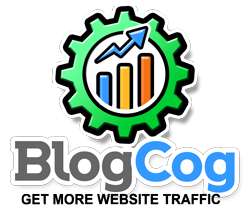
Are Empty Pages Bad for SEO?
Share
Let's turn challenges into opportunities. Empty pages on your website might seem harmless at first glance, but they can significantly impact your site's SEO performance. Understanding the implications of these content-less spaces is crucial for maintaining a healthy online presence.
Empty pages, often referred to as 'thin content,' lack substantial information for both users and search engines. They can arise from various scenarios, such as placeholder pages, under-construction sections, or pages with minimal content. Regardless of their origin, these pages can be detrimental to your website's SEO health.
Why Empty Pages Harm SEO
Search engines strive to provide users with the most relevant and valuable content. When they encounter empty pages, several issues arise:
- Poor User Experience: Visitors landing on empty pages may feel frustrated, leading to increased bounce rates and decreased trust in your website.
- Wasted Crawl Budget: Search engines allocate a specific crawl budget to each site. Empty pages consume this budget without offering value, potentially delaying the indexing of more important content.
- Index Bloat: Including numerous low-quality pages in your site's index can dilute the overall authority and relevance of your website.
- Internal Linking Disruption: Empty pages can break the flow of link equity throughout your site, hindering the performance of other pages.
Identifying and Addressing Empty Pages
Regularly auditing your website is essential to identify and rectify empty pages. Here are some strategies:
- Content Enhancement: Populate empty pages with valuable, relevant content that serves your audience's needs.
- 301 Redirects: If a page no longer serves a purpose, redirect it to a related, content-rich page to preserve link equity.
- Noindex Tags: For pages that must exist but shouldn't be indexed, such as thank-you pages, use 'noindex' tags to prevent them from appearing in search results.
- Regular Audits: Utilize tools like Google Search Console to monitor your site's health and identify pages with little to no content.
Best Practices for Maintaining SEO Health
To ensure your website remains SEO-friendly, consider the following best practices:
- Consistent Content Creation: Regularly update your site with fresh, high-quality content that addresses your audience's interests and queries.
- Strategic Internal Linking: Create a robust internal linking structure to guide users and search engines through your site's valuable content.
- Technical SEO Optimization: Ensure your website's technical aspects, such as page speed and mobile responsiveness, are optimized for the best user experience.
- Engage with SEO Services: Partnering with services like BlogCog AI-Driven Blog Subscription can help maintain a consistent and effective content strategy.
Empty pages are more than just blank spaces; they represent missed opportunities to engage with your audience and improve your site's visibility. By proactively managing and optimizing your website's content, you can enhance user experience and strengthen your SEO performance.
For more information on how to elevate your content strategy, explore our Blogging for Search Domination guide.
Related Posts:
